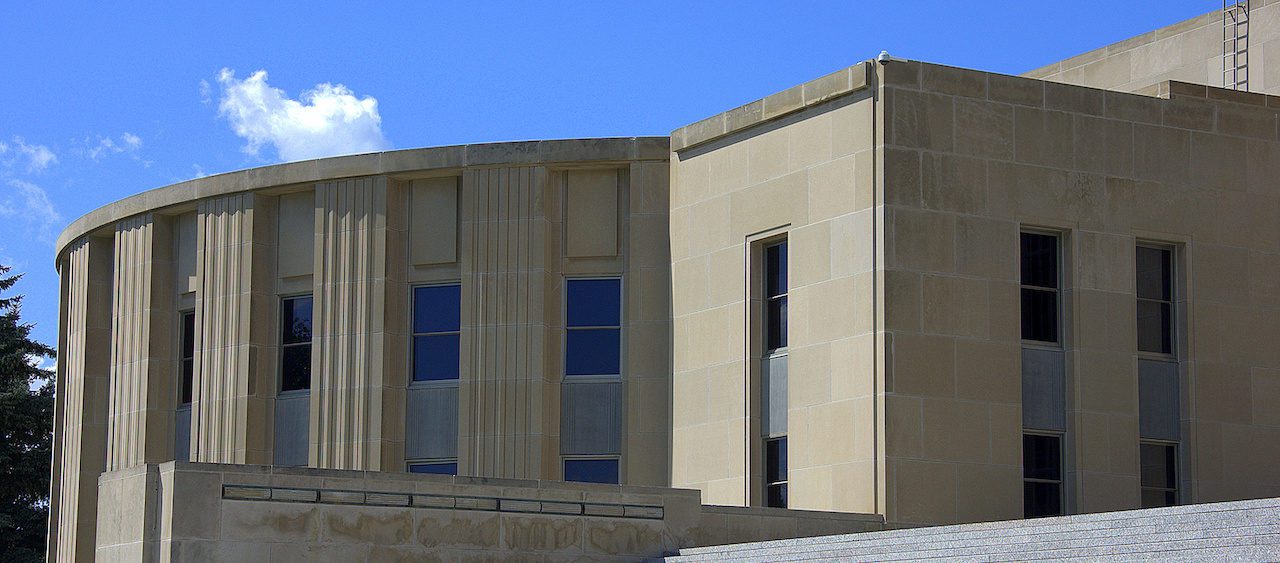
Bill Summary: Improving Public Safety and Outcomes for Youth in North Dakota’s Juvenile Justice
Background
In the winter of 2019, the North Dakota Juvenile Justice State Advisory Group, Commission on Juvenile Justice (Commission), and the Interim Judiciary Committee, partnered with The Council of State Governments (CSG) Justice Center to conduct a preliminary assessment of North Dakota’s juvenile justice system with the goal of identifying opportunities to better align state policy and practice with what research shows works to improve public safety and youth outcomes. To conduct the assessment, CSG Justice Center staff analyzed existing statutes and data and conducted focus groups with key stakeholders, including law enforcement, prosecutors and public defenders, judges, juvenile court officers, Division of Juvenile Services staff, other health and human service state agencies, educators, service providers, and Native American representatives.
The assessment identified that North Dakota’s juvenile justice system has made significant progress over the previous five years, but that key gaps and challenges remain, including:
- Lack of statewide vision and consistent application of research-based supervision and service approaches across all parts of the state, populations, and agencies
- Limited access to services without system involvement, resulting in unruly and other low-risk youth being pushed into the juvenile justice system not because they are a public safety risk but only to receive services
- Minimal statutory guidelines or criteria pre-disposition for matching youth to the appropriate level and length of supervision and for ensuring that only those youth who are a public safety risk are detained and/or incarcerated
- Limited capacity for evidence-based service delivery, particularly behavioral health services, and limited focus or ability to capture key metrics on quality assurance, data collection, and accountability
The analysis identified that current statute (primarily 27-20) also reflected these challenges, including conflating multiple different populations (child welfare, unruly, and delinquent youth); failed to establish clear roles and a guiding statement of purpose; and did not reflect research-based or developmentally appropriate approaches proven to promote public safety and positive behavior change.
Based on this analysis, commission members drafted a bill designed to better align North Dakota’s juvenile justice statute with research and best practice and provide youth-serving agencies with the guidance, support, and tools necessary to improve outcomes and increase public safety.
Key Bill Provisions
In September 2020, the draft bill was introduced to the Interim Judiciary Committee for the 2021 legislative session with the following key provisions:
Unruly Youth
- Decriminalizes unruly offenses and separates unruly youth, child welfare, and delinquent youth in statute. (Unruly offenses are also known as status offenses, which are only a crime on the basis of age and include truancy or failure to obey a parent.)
- In lieu of arrest and court involvement, designates the human service zone as responsible for addressing these youth’s service needs
Diversion
- Requires use of validated risk and need screening tools to guide diversion decisions
- Enhances guardrails and clarifies school-based referral guidelines to delinquent court for minor offenses, outside of drug- or assault-based offenses, without first exhausting all available resources
- To ensure continued protection of public safety, establishes safeguards around the use of diversion multiple times within a year for the same youth
Right to Counsel
- Expands right to counsel to include any delinquency proceeding in which a petition has been filed
- Establishes the presumption that all youth are indigent, and as such, have access to a public defender, regardless of their parents’ decision or financial situation
Dispositional Assessment
- Requires a predisposition assessment for all cases, including a validated risk assessment
- Findings of this report will be submitted to the courts in a written report and will support decision-making on placement, supervision length, and conditions of supervision.
Out-of-Home Placement
- Restricts the use of detention and out-of-home placement solely due to a lack of treatment options in the community or to address youth’s “needs,” and, as such, limits placements for only those youth who are a risk to public safety based on the results of a validated detention or risk assessment tool.
Potential Impact of Bill Enactment
Through this bill, North Dakota has an opportunity to bring its juvenile justice statute in line with research and nationwide best practice and provide clear guidance and support to youth serving agencies in how to use resources efficiently to improve outcomes and protect public safety. These reforms will:
- Allow unruly youth to access services without necessitating contact with the juvenile justice system, which research shows will improve outcomes and reserve limited resources for the highest-risk youth
- Increase the use of validated risk and needs screenings and assessments to ensure that the right youth are matched with the right level of supervision and services
- Reduce the unnecessary use of out-of-home placement by prioritizing secure facilities for only those youth who are a public safety risk and allow resources to be redirected toward more cost-effective community-based services.










